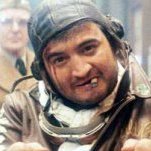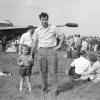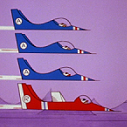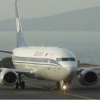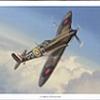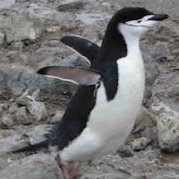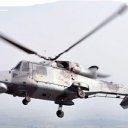-
Posts
16,404 -
Joined
-
Last visited
-
Days Won
2
Giorgio N last won the day on January 2 2020
Giorgio N had the most liked content!
About Giorgio N
- Currently Viewing Topic: High speed silver & NMF
- Birthday 22/07/1969
Contact Methods
-
Website URL
http://
-
ICQ
0
Profile Information
-
Gender
Male
-
Location
Italy
Recent Profile Visitors
20,464 profile views
Giorgio N's Achievements

Blabber Mouth (7/9)
14.8k
Reputation
-

1/72 Fujimi Phantom FG.1 rebox by Hobby 2000 - released 2025
Giorgio N replied to matford's topic in The Rumourmonger
If the price of the rebox is in the £22 range then it's very good value for money. At that kind of money I may be tempted to buy another one myself... Most of mine are also from the original releases... but then I paid them €10 each, so can't complain too much at that price. In Italy the British Phantoms aren't that popular so it's easier to find them for low prices -

1/72 Fujimi Phantom FG.1 rebox by Hobby 2000 - released 2025
Giorgio N replied to matford's topic in The Rumourmonger
Be sure to get the later issues with the updated moulds. These improved on the original in several areas and are the ones reboxed by Hobby 2000 (and earlier Italeri). Many of the preowned kits on the market are from the original moulds -
Very hard to tell what's worth keeping and what not of a kit as each of us has different expectations and wants different things. To me the only part worth keeping of the Italeri kit may be the decal sheet but then I'm very demanding when it comes to Spitfire kits. Thousands of modellers all over the world on the other hand may be perfectly happy with that kit as it is from the box. Regaerding its accuracy Graham already mentioned a couple of very visible issues, the short nose and the radiators with sloping sides. And the propeller, that really doesn't look like any Spitfire prop I can add a few other issues.... starting from the fuselage: it may or not be a bit too thin (and yes, it is...) but the worst part is that its sides around the cockpit and engine cowling do not feature the correct elliptic section but are straight. Then there's the lack of the fairing between the wing leading edge and the fuselage, that is so typical of the Spitfire. Some have suggested scribing this but the real thing is a 3-dimensional affair. The wing... the shape is IMHO not great but what is very weird is that the panel lines for the outer MG on the lower surfaces do not match the uppers. The spent case outlet is so in the wrong place (IIRC one bay too outward). Staying on the wing, the wheel wells feature strange sloping walls and the shape of the gun fairings is pretty bad. On the positive side, the cockpit is not too bad and can be adapted to other kits. The clear parts are nicely printed but a bit on the narrow side. General mould quality is not great for today standards, it was Ok when the kit first appeared although panel lines are quite wide and not really sharp. I'd say have a good look at the kit if and when you receive it, compare to other Spitfires in the stash and make your mind about it. Personally I built the one I bought many years ago as a Seafire III, shortening the nose, replacing the propeller with IIRC a Matchbox part and scratchbuilding the various Seafire features. I still have one that came as part of a lot but I'm not planning to ever build it. The Eduard kit can be found for not much money in my part of the world and in any case I have a number of these in the stash to cover all my Mk.IX needs
-
The Anson served well into the '60s, with the last ones retiring around the end of the decade. I would have to check when the communication variants were retired, IIRC the trainers were the last to go but I'm sure others here know more. A Dakota may not really be the most representative RAF transport twin of the era but served into the '60s in the Middle and Far East and has the advantage of being easily available in 1/48 scale, be it the relatively recent Trumpeter kit (currently in production) or the older Monogram kit and its Revell reboxes (not in production but easy enough to find).
-
The Fujimi kits are a bit tricky. Fujimi tried to squeeze as many variants as possible from a common set of moulds and this resulted in two things: 1) The fuselage is made from a number of parts and these do not always fit well. The rear fuselage inserts are the worst offenders, so much that Quickboost offers a resin replacement for the high back variants. The engine upper cowlings is also not a good fit. 2) A number of panel lines are left to the modeller to fill to reproduce the different variants. Not ideal for a beginner, although many may just not bother. The kit is nicely moulded although light on detail, with the cockpit only featuring a seat and an instrument panel. The wheel wells at least are decent. When it comes to fit, IMHO the best Spitfire kits are the Hasegawa Mk.IX and the Academy Mk.XIV. The latter in particular not only fits very well, it's also very well detailed and nicely moulded. The fact it's generally also pretty cheap adds to its merits. Pity that it's so inaccurate, otherwise it would have been the perfect 1/72 Spitfire kit for many. The Hasegawa Mk.IX is not much detailed but builds nicely. It's not accurate either since it's fuselage is short and skinny (the wings are much nicer). For a while it's been a pretty expensive kit but today can be found on the second hand market for not much. I still have a couple from a lot that I bought for a fiver each, it's not as accurate or detailed as the Eduard kit but anytime I want to build a relaxing model I grab one.
-
All Sword Spitfires show their short-run nature and their fit is not up to par with modern mainstream kits. The Italeri Spitfire however isn't a good fitting kit either, the multi-part fuselage in particular requires a lot of work and care to fit properly. The Airfix Vc is in a different class, would be a much better choice for a relaxing build. As for a XII, I would probably just cut the nose from the Brigade set and use it on an Airfix Vc, with the gun bulges coming from the spares in the AZ Mk.IX kit (that includes both wide and narrow ones)
-
They are irreplaceable aircraft because they are long OOP but they are not irreaplaceable within the current war: the Bears have not operated for some time, they have been sitting idle on their runways without much concern. Their crews were lucky to have not been retrained into infantry... If the recent news about the destruction of a few Su-34s is confirmed, this would be a much more important event as these are currently used to attack targets in Ukraine
-
Personally I'd not bother spending money on a 1/72 Italeri Spitfire, it's a very poor kit. The brigade parts may have been designed for the Italeri kit but I'd rather use almost anything else and put in the work needed to make the parts fit. If you really want one and don't win the one you're bidding for, I can send you mine for the cost of postage... that unfortunately after Brexit has probably become higher than the fiver this kit costs at model shows
-
Looks like the various decal companies had some "interesting" ideas about RN135... looks like some had never bothered to check the existing pictures. This aircraft was discussed a few times on this forum, for example here
-
Yes to the white bands, they had already been introduced by the time Lacey shot down the Oscar. This picture of Lacey clearly shows the bands on the tail of his Mk.VIII... or whatever Mk.VIII he was sitting in when the picture was taken https://www.iwm.org.uk/collections/item/object/205212388
-

Food for thought .... Taiwanese F-104 anyone?
Giorgio N replied to RidgeRunner's topic in Aircraft Cold War
Back to the Taiwanese F-104s equipped with the TDU-10, this video shows quite a few details -

Food for thought .... Taiwanese F-104 anyone?
Giorgio N replied to RidgeRunner's topic in Aircraft Cold War
I checked both the Model Art Profile volume on the T.2/F-1 family and the Bunrin Do on the F-1 and unfortunately no clear picture of how the TDU-10 cables run. There are however a couple of pictures of the assembly under the starboard wing of the F-1, if interested I can send them to you. More important, the books mention that only a small number of F-1s could carry the target as they had received certain modifications... problem is that I haven't found yet what these modifications were. I'll check again in case I have missed something.... mind, both books are in Japanese language and my only option to understand the text is to use a translator through my mobile camera. It actually works impressively well but it's not the fastest way to read a book... -

1/72 Fujimi Phantom FG.1 rebox by Hobby 2000 - released 2025
Giorgio N replied to matford's topic in The Rumourmonger
There aren't any but since it was asked about a comparison between the two kits, even if different variants, it's fair to give an opinion on the matter As nice as the Fujimi Spey Phantoms are, the current FM kits feature even better detail. One other improvement that immediately comes to mind is the presence of full length intakes that are much more realistic than the plastic wall offered by Fujimi. I would also rate the FM kits as better engineered, I much prefer how they designed the main fuselage parts compared to other 1/72 Phantom kits. Don't get me wrong, I like these Fujimi kits and have several in the stash. When they were introduced they were among the very best 1/72 kits on the market and made most others obsolete. Now a few decades later others are offering even better kits and should FM venture into Spey Phantom territory I would be very, very tempted to replace my Fujimis -

1/72 Fujimi Phantom FG.1 rebox by Hobby 2000 - released 2025
Giorgio N replied to matford's topic in The Rumourmonger
Having both, my view is that while the Fujimi British Phantoms have really nice detail, the FineMolds kits are at a higher level by quite a margin. Not surprising considering the age of the two families of kits -

Food for thought .... Taiwanese F-104 anyone?
Giorgio N replied to RidgeRunner's topic in Aircraft Cold War
Do you have the Model Art Profile volume? If not I can check if this shows something





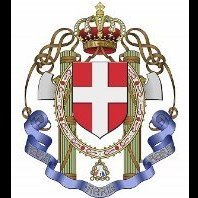
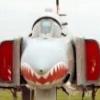
_5.56mm_Rifle_MOD_45162138.thumb.jpg.053e4f85b299efc3857bfa5c1911dc3c.jpg)

